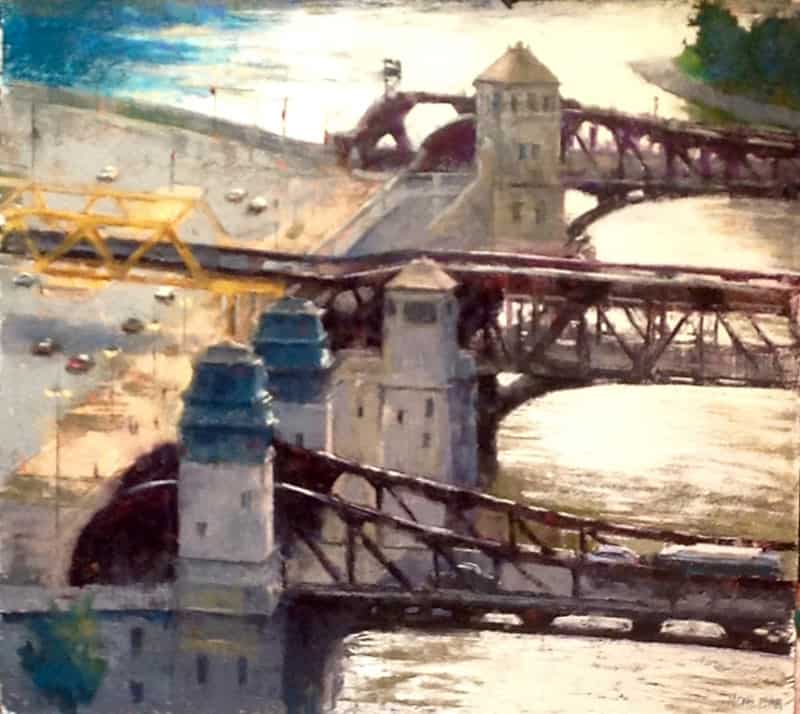It’s Friday so it’s time to put the ONE question to one of Pastel Today’s Advisory Board members. Today we have Nancie King Mertz who will suggest a way to nail down the composition of your painting.
The question?
Do you have a favourite pastel hack – a clever trick or shortcut that you’ve introduced into your process?
Nancie immediately answered, “I start with a vine charcoal tic-mark-map that in 5 minutes or so will help me nail down the composition and perspective, and indicate where I need to apply the darks.”


I was delighted that this was Nancie’s pastel hack as I’d seen her do this on her Pastel Live 2022 session. I wanted to know how this idea for nailing down the composition developed.
“Starting as an oil painter in high school, I often did a very quick sketch of my composition on the canvas with a small brush to make certain I had all the elements I wanted to include. I found that if I simply started painting, shapes would get too large and I would run out of surface! When I began using pastel in 1988, vine charcoal was my “tool” for sketching in the shapes, and when I began teaching pastel, I coined the phrase “tic-mark-map” to help students understand that the process is a simple, rapid map of brief marks to indicate where shaped are needed. The map is a “place-holder,” not a drawing, and takes only 5 to 10 minutes to establish.”
Brilliant!


How else does this help your work?
“The map helps me get the perspective indicated right from the start when I’m including structures. It keeps all elements of the composition “reigned-in” so as not to creep off the edges of the page.”
It’s such an obvious solution yet like most inventions, too obvious for most of us to discover on our own!
I also love using vine charcoal to draw up a piece but many students worry that the charcoal will smudge and muddy things up. Nancie, how do you prevent the charcoal from affecting the pastels that come on top?
“The vine charcoal is applied with a light hand, thus a “tic-mark-map.” I actually simply tap the length of the stick onto the surface of the sanded paper to get directional lines and the general shapes indicated without spending time drawing everything in. So little charcoal is introduced at the start that it doesn’t interfere with the colour when applied. Also, with this light application, I can easily smudge it away to make corrections and re-draw. The map helps me visualize the painting and instructs me where to place the darks-the first step after the map.”


Love these ideas, Nancie! How do you envision them helping others?
“Charcoal is not so scary for those new to pastel. It breaks the fear of making that first mark on a clean surface. Once they have a map – or Plan – introducing the pastel to the surface eases them into the act of painting.”
Final question, if you didn’t have this trick, how would that affect your work?
“Occasionally I will “attack” a surface without the map, but the scene is often one that requires less control, as in NO man-made elements, just open landscape. These paintings seem less developed and organized, usually just an impression of a plein air moment.”
Thanks so much, Nancie!
You can see Nancie making her tic marks in this DVD before she starts to paint.
If you try this pastel hack to nail down the composition in one of your paintings, be sure to leave a comment!
________________________________________________________________________
You still have time to enter the IAPS online show!
I thought I’d missed it but we still have time. Yay!!! The deadline to enter the International Association of Pastel Societies online show is Friday 23 September at midnight PDT. That’s next Friday. You have a whole week!
For all the info (prospectus and where to submit your work), click here.
To inspire you, here are six winners from the 40th IAPS Open Division:

And that’s it for this time!
Gail



